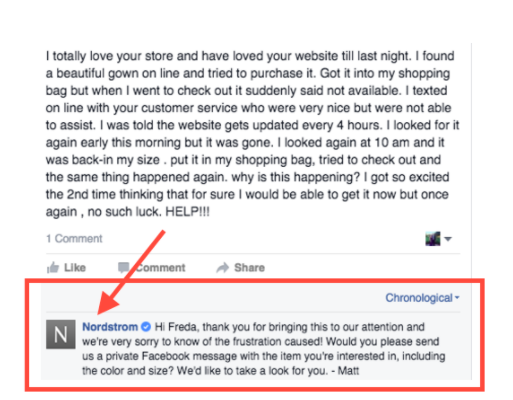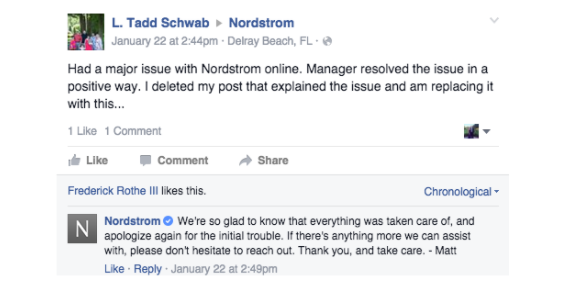5 Step Guide to Managing Negative Customer Feedback for your Ecommerce Business
Do not underestimate what customer feedback can do for your ecommerce site.
When it’s good, it can be a very effective way to get users to engage with your site, trust what you have to say and have confidence in your product.
But once in awhile, for different reasons, feedback won’t always be positive for your brand. As much as you want to provide great customer service and ensure the quality of your products, there will be instances where customers will become unhappy, disgruntled, and all too ready to go to social media and tell the world about it.
Now, take note that negative feedback, while it’s best to avoid them, aren’t automatically bad. As long as it’s nothing too major, it can add to your site’s credibility and authenticity, as well as give you insight into how you can improve your business for your customers.

Customer interaction, no matter what kind, can be a great learning experience for your business.
Image Credit : http://www.chipmunkdesign.co.uk
Knowing how to manage the negative feedback however, can go a long way towards making something seemingly bad, work out for you in the end. Here’s a simple, five-step process on how you can do that.
1. Understand the situation
Just because someone complains on a public platform doesn’t automatically mean that their issues are legit. There’s the likelihood that it could be a misunderstanding, it could be spam, or it could be completely unfounded. In any case, start with the following to ensure its validity–
- Don’t immediately delete the comment.
- Look at the name of the complainant or reviewer and check their credentials.
- Read what they posted carefully to understand what they are trying to say.
2. Research into the incident
Once you’ve established the validity of the feedback, it’s important that you understand the factors that contributed to them voicing it out on your site—
- What went wrong? On an ecommerce site, there are several elements that could lead to this—complicated user experience, missed deliveries, defective product quality are just some of the most common reasons. Find out what it is, and check if there was something your internal systems and processes could have done to prevent it.
- What can you do? Once you’ve made a note of what led to the issue, ask yourself now if you could do something about it. Don’t do this in hypothetical terms either—you want to give your customer an immediate solution to the issue.
- How did the feedback come across? Was it constructive feedback that serves to legitimize your business? Or is it an irate and angry form of feedback that will require you to placate your customer?
3. Tailor your response
The factors above are designed to give you more insight into how you can address the situation. Depending on what their feedback is, you can now give them feasible next steps that will pacify the customer.
- Avoid giving generic, canned responses—it implies that the business owner doesn’t have customer service as a priority.
- Do not go on the defensive. Customers are always your priority.
- Address them by their name and do not beat around the bush.
4. Reach out to your customer
Often, irate customers who go on social media or online to air their concerns do so because they simply want to be heard and know that their concerns are being taken seriously by the business owner.
- Reach out to your customer via the channel where they posted their negative feedback, and try to take the discussion offline. You may want to provide a direct link to you via an email address where you can easily coordinate and exchange contact information for speedier discussions.

In this example from Nordstrom, the brand demonstrates how you can reach out and take the conversation off a public platform.
- Acknowledge their feedback and apologize—empathize with what they went through and let them know that they are being heard.
- Provide assistance in any way you can—give them assurance that their complaint will be addressed immediately and that you will do your best to ensure it doesn’t happen again.
5. Subtly turn complaints into compliments
Remember that customer interaction, regardless of nature, positive or negative, is an opportunity to improve your business. When you reach out and do something for them, it means that you are going above and beyond to make sure they are happy. Despite initial problems, making the effort for them can lead to a follow up feedback—this time focusing on how well your business addressed their concerns.
- Focus on addressing the issue. Don’t ask customers directly to pull down their negative comments or to revise it. If they’re happy with what you did for them, they’d be more than happy to do it themselves.
- A good technique to help steer negative feedback towards more positive ground is to go back on the platform where they posted their negative comment, after you’ve already resolved, thanking the customer for their understanding. Typically, they will reply and thank you for all your help. This demonstrates to other customers that you have customer interests top of mind.

When customers are happy with how you’ve addressed the issue, they will be more than willing to take down their negative feedback or revise it.
Negative feedback for any business is inevitable. The important thing to remember is knowing how you can address it effectively so that you can continue to delight your customers.
If you have any questions about this process, feel free to leave a message in the comment section below.
Share This Story
Get the latest growth ideas, strategies, and best practices delivered to your inbox.
Quick read that helps 7000+ subscribers.









